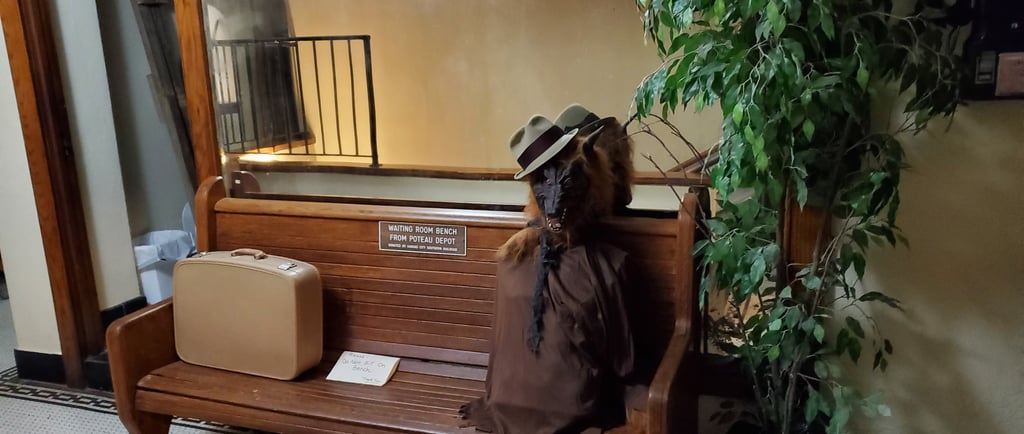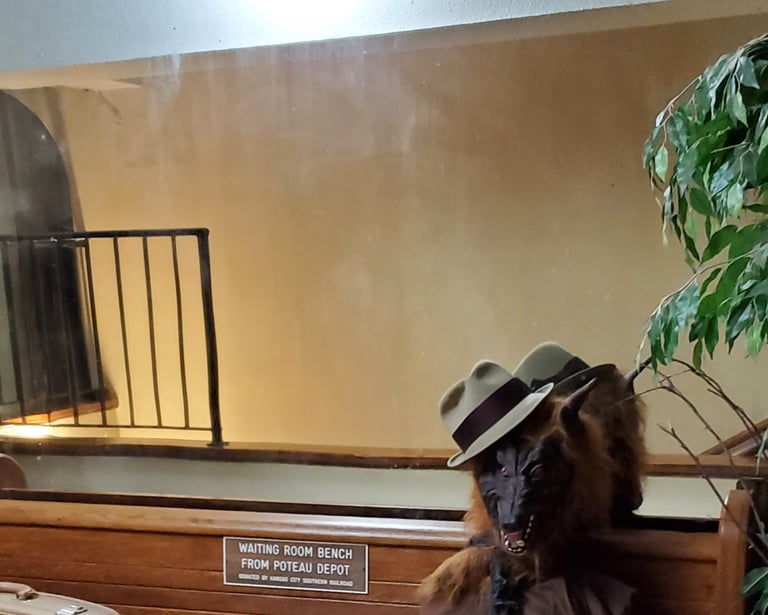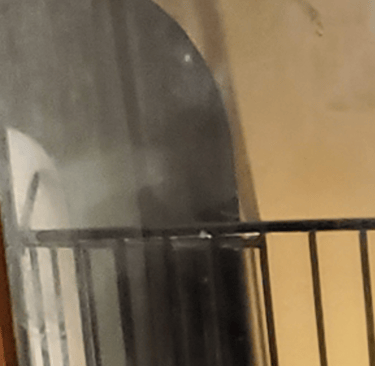What's Stopping You? Change Your Life!
Porch Talk
Ghosts of the Quiet Towns
WILLIAM
10/31/20254 min read


It’s almost Halloween, and we’ve been in Poteau for a week. We’ve been unpacking storage and cleaning out my sister-in-law’s property, but we’d like to find something a bit more traditionally Halloween than chasing dust bunnies—like finding ghosts, that kind of thing.
The former Lowrey Hotel now serves as the LeFlore County Museum. Its white brick façade watches the street with a kind of polite patience, waiting to tell its stories. Inside, there’s the legend of Room 109 and the unfortunate death of a child. It’s said that the area around the second-floor landing near Room 109 may be haunted. There have even been reports of a child’s ghost decorating a Christmas tree that no longer exists.
Outside, Dewey Avenue is empty except for a few shop lights and the benches where men used to sit. There’s a legend of an owl-faced stranger who still walks those sidewalks in silence.
There are stories like this to be told, but unfortunately, there aren’t any planned events at the museum to share them this Halloween.
There’s also the legend of the ghost lights in Heavener. The blue orbs are said to haunt the old Heavener Speedway. Sometimes they’re blue, sometimes red, sometimes white—and they’re said to be the warning lamps once carried by brakemen or conductors who didn’t survive a train wreck. Folks say the lights drift like lanterns where no one ought to be.
But there aren’t any activities such as ghost walks or tours scheduled. Probably not a great idea to do a ghost walk near railroad tracks.
There are Halloween events planned, and we’ll probably attend one or two. There are the decorated streets and candy giveaways sponsored by the Poteau Chamber of Commerce, where local businesses and organizations hand out tricks and treats downtown. We may skip that one—it seems geared toward the little ones.
Then there’s the “Dead End Haunted House,” a seasonal, community-run haunted attraction. It’s free—we like that. There’s also the “Halloween Bash” at the Donald W. Reynolds Community Center in Poteau. I love the small-town feel of these things.
And there’s the “Haunted Trail Ride” or “Haunted Hayride” at Long Lake Resort on US-59. It’s not free, but I hear it’s worth every cent. We’d like to go, but the nights have been bitter cold since the last rain, so we may pass.
This area has so much history—from the coal mine disaster in McCurtain to the Bonnie and Clyde bank robbery in Poteau—there are hundreds of stories to be told here. Many are haunting tales of hardship, accidents, and disasters. These stories are often spoken softly by people who swear they don’t believe in that sort of thing. Not ghostly things, exactly, but the weight of human suffering.
Here, such stories are called porch talk. It’s how ghosts survive—not as screams in the night, but as stories shared on quiet evenings.
These aren’t campfire boogeyman tales; they’re where folklore, sociology, and rural life intersect.
In communities where fewer people read or write regularly—whether from limited schooling, poverty, or simple disinterest—storytelling naturally remains the main medium for passing on knowledge.
When written language isn’t the default, speech itself becomes memory. That’s why, in many rural regions such as Appalachia, the Ozarks, or among northern Japan’s Ainu people, ghost stories and family legends intertwine. They aren’t less “true”—they just travel by voice instead of paper.
It’s like the difference between a library and a front porch: one stores text, the other stores voices.
Oral storytelling has its own grammar—repetition, rhythm, gesture, and tone take the place of punctuation and paragraph breaks.
So ghost stories told in porch-talk style are best treated as social and cultural stories first—and as horror only second.
Porch-talk ghosts aren’t about fear; they’re about belonging—to a rural community where ghost stories aren’t meant to scare, but to connect.
These stories aren’t horror; they’re heritage. Turning them into entertainment can feel disrespectful to locals if it strips away empathy or moral meaning. If a story grew out of a real death or hardship, you’re stepping onto oral memorial ground.
Treating them as part of how communities process loss—how silence replaces therapy, how faith reframes fear—honors their purpose.
That kind of storytelling feels folkloric and honors the rural moral code: never mock the dead, never sensationalize suffering.
Here in the South(ish), the relationship between literacy and folklore shows that “ghost stories” are really about how people remember, communicate, and survive in places where silence might otherwise swallow history.
In cities, ghost stories belong to haunted tours and theaters. Out here, in the Ouachita foothills along the Heavener Speedway, they belong to conversation—and to the classic opening line of any Oklahoman ghost story: “I don’t believe in ghosts… but my daddy sure saw something.”
Maybe the real haunting in LeFlore County isn’t by spirits at all, but by silence—the kind that fills a valley when the trains stop running. The porch talkers know this. They keep the ghosts alive by remembering them just enough to keep company on long nights.
So I’m putting away the spooky costume down here in the holler for this year. Maybe we’ll head over to Downtown Halloween and score some candy.




